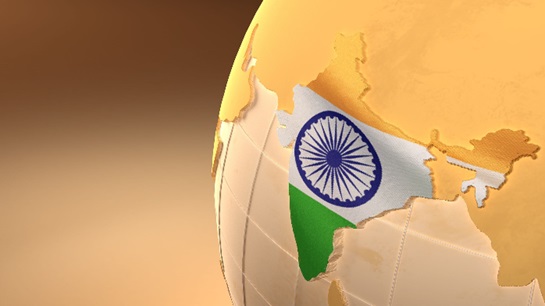The insurance regulator has released an exposure draft for the proposed IRDAI (Rural, Social Sector and Motor Third Party Obligations) Regulations, 2024, after discussions with the insurance industry.
The gist of the initiatives in the draft aims to set underwriting goals for insurers to meet social obligations.
This is part of the comprehensive review of regulations being undertaken by the IRDAI to enhance the ease of doing business, reduce the compliance burden for stakeholders and ensure that the interests of policyholders continue to be protected, said the regulator.
Saying that a new strategy is necessary to achieve the objective of ‘Insurance For All’, IRDAI proposes several major changes to the industry in the exposure draft:
Rural sector
1) The unit for measurement for the rural sector will now be gram panchayat (village council);
2) For life insurers, the number of lives under individual policies and group policies will be considered in determining compliance with social obligations by insurers;
3) For general insurers, the number of individual dwellings under the fire segment and the number of vehicles under the motor insurance segment will be counted;
4) For general and standalone health insurance (SAHI) companies, the number of lives separately under health insurance and personal accident insurance will be taken into consideration;
5) Life insurance — the minimum number of lives to be covered by all life insurers in all gram panchayats in the country shall be 30% in each gram panchayat subject to a minimum of 25,000 gram panchayats as driven by the lead insurer in the first year. This increases to 40% subject to a minimum of 50,000 gram panchayats and 50% subject to a minimum of 75,000 gram panchayats in years two and three respectively.
6) General insurance — the minimum number of dwellings under fire insurance and the number of vehicles under motor (comprehensive and TP) to be covered by all general insurers in all gram panchayats in the country shall be 30% in each gram panchayat subject to a minimum of 25,000 gram panchayats as driven by the lead insurer in the first year. This increases to 40% dwellings under fire insurance and vehicles under motor (comprehensive and TP) subject to a minimum of 50,000 gram panchayats and 50% lives subject to a minimum of 75,000 gram panchayats in years two and three respectively.
7) Health insurance — the minimum number of lives under health and personal accident insurance to be covered by all general and SAHI insurers in all gram panchayats in the country shall be 30% in each gram panchayat subject to a minimum of 25,000 gram panchayats as driven by lead insurer in the first year. This increases to 40% under health and personal accident insurance subject to a minimum of 50,000 gram panchayats and 50% under health and personal accident insurance subject to a minimum of 75,000 gram panchayats in years two and three respectively.
Social sector
8) The unit of measurement for the social sector continues to be the number of lives for all insurers.
9) Since all insurers have been able to meet their social sector obligations, the number of lives to be covered under the social sector has been increased to 20% in year one after notification.
10) Insurance business pertaining to government social security schemes such as Pradhan Mantri Awas Yojana, Pradhan Mantri Suraksha Bima Yojana (PMSBY), Pradhan Mantri Jeevan Jyoti Bima Yojana (PMJJY), etc. where total/ partial premium is paid by the Government, with/without any contribution from the members/ beneficiaries covered shall be considered for rural and social sector obligations.
11) Insurance policies covering lives issued to BPL cardholders, MNREGA cardholders, eShram cardholders, Direct-Benefit-Transfer beneficiaries, Ayushman Bharat cardholders, Pradhan Mantri Mudra Yojana beneficiaries, Jan Dhan account holders, beneficiaries of PM Kisan Samman Nidhi Yojana, PM Viswakarma Yojana, Pradhan Mantri Jan Arogya Yojana, etc would qualify to be counted for social sector obligations. These various schemes are financial inclusion programmes for those with low incomes.
12) Microinsurance policies issued are eligible to be counted towards social sector obligations.
13) Insurance policies sold through Bima Vahaks (women who sell insurance through a dedicated women-centric channel) will be counted towards rural and social sector obligations
C. Motor third-party obligations
14) With regard to motor third-party insurance, obligations are specified for goods-carrying and passenger vehicles because nearly 50% of the vehicles in these two categories are uninsured. They are important segments of the motor insurance business and are exposed to third-party claims.
15) Every general insurer is required to underwrite an increase of at least 20% of the total number of goods and passenger vehicles as compared to what was covered in the last financial year or 20,000 vehicles under these categories or 10,000 vehicles in each category, whichever is higher.
16) Coverage of new goods and passenger vehicles shall not be counted towards Motor third-party obligations.
17) Motor third-party obligation fulfilment shall be contributed by existing vehicles and uninsured vehicles that are insured provided the gap in insurance coverage is at least 30 days.
18) Every new insurer shall underwrite a minimum of 10,000 goods and 10,000 passenger vehicles in the first financial year of its operations.
19) Any health, reinsurance, agriculture, and export credit guarantee insurer is exempted
20) The insurers are allowed to buy and sell the obligations from out of the surplus to the extent of 20%;
21) The insurer who has sold its obligations will continue to be the insurer and shall be responsible for servicing the insurance policy and settling claims under it.
The IRDAI has directed that feedback on the exposure draft be submitted by 27 February 2024.


![[Toyota Times] From Strengthening Foundations to Boosting Productivity – Toyota Focuses on Break-Even Volume [Toyota Times] From Strengthening Foundations to Boosting Productivity - Toyota Focuses on Break-Even Volume](https://businessfortnight.com/wp-content/uploads/2025/11/Toyota-Times-From-Strengthening-Foundations-to-Boosting-Productivity-Toyota-218x150.jpg)































